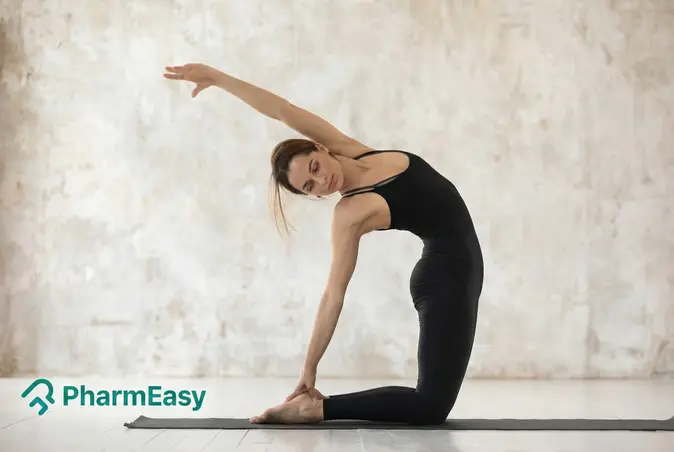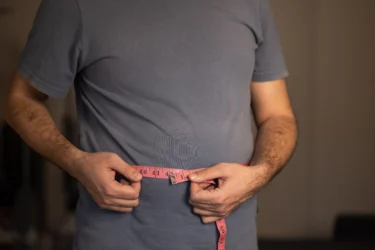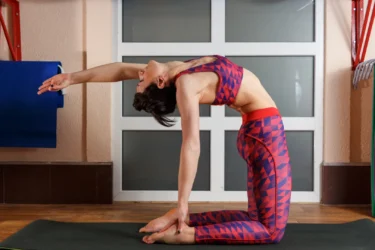Benefits of Ardha Ushtrasana and How to Do it By Dr. Himani Bisht
By Dr. Himani Bisht +2 more

Get,

to manage your symptom
Get your,


4 Cr+ families
benefitted

OTP sent to 9988776655



You’ve successfully subscribed to receive
doctor-approved tips on
Whatsapp

Get ready to feel your best.

Hi There,
Download the PharmEasy App now!!


Register to Avail the Offer
Send OTPBy continuing, you agree with our Privacy Policy and Terms and Conditions

Hi There,
Sign up on PharmEasy now!!
Trusted by 4 crore+ families

OTP sent to 9988776655



You have unlocked 25% off on medicines




Code: NU25
By Dr. Himani Bisht +2 more
Table of Contents
Yoga is a type of body-mind exercise that combines physical effort with a mindful interior emphasis. The practice of yoga helps us become more aware of our mind, body, and breath by witnessing the processes in the mind and body. Yoga a 3000 year old tradition, has now gained limelight in the western world as a holistic approach towards health. This mind-body yoga practice consists of asanas (physical postures), pranayamas (breathing techniques) and meditation. Everyone can perform yoga under the trainer’s guidance, from children to adults. In this article we will explore the health benefits of ardha ushtrasana1.

The asana comes from the Sanskrit words “ardha” which means half “ustra” meaning camel and “asana” which means yoga posture. So the ardha ushtrasana in English is half camel pose2. This asana is a front-body stretch and backbend, which prepares the body to enter the ushtrasana. The posture starts with a simple sitting pose yoga (Vajrasana) and involves stretching one arm over the head and placing the other hand on the heel.
Did You Know?
Let us learn how to do ardha ushtrasana:
Breathing pattern: Take a deep breath while stretching your arms sideways. Breathe while twisting, hold your breath in the final position and then breathe normally while returning to the original position3.
Note: It is best to perform any asana with an empty stomach, and the best time to perform ardha ushtrasana is early morning as the body is active and fresh.
Researchers believe that regular practice of Ardha Ushtrasana and its variations may enhance lung capacity. Ardha Ushtrasana is beneficial for opening up your shoulders and chest that may increase lung capacity as well as boost self-esteem and posture10.
Dr. Siddharth Gupta, B.A.M.S, M.D (Ayu)
Keeping the origin and history in mind, let us now discuss the benefits of ardha ushtrasana, which will make this asana worth trying. A few health benefits of ardha ushtrasana are:

It is evident that physical inactivity and a sedentary lifestyle increase our body fat, making us overweight and obese. Literature studies support that performing exercises and yoga may reduce body fat, reduce body weight, and help manage obesity. A study4 by Chauhan et al. in 2017 explained that ardha ushtrasana, along with other asanas, may reduce obesity and maintain optimal BMI (an indicator of body fat). This indicates that ardha ushtrasana may have the potential to manage obesity. However, you should not consider the practice of ardha ushtrasana as an alternative to modern medicine. You should consult your doctor for proper management of obesity.

Literature studies show that yogasanas may positively impact blood pressure. Chauhan et al. conducted a study in 2017 to evaluate the effect of asanas on health. This study4 showed that the ardha ushtrasana might help reduce blood pressure (both systolic and diastolic) and thus help manage hypertension. However, we need more studies and proof to claim these effects with greater reliability. Therefore, it is advised to consult your doctor for the proper treatment and not rely on this asana alone. Additionally, the practice of ardha ushtrasana should be strictly done under the supervision of a qualified trainer.

In simple terms, syncope refers to an episode of fainting or sudden loss of consciousness. Shenthar et al. in 2016, conducted a study5 that showed that the performing yogasanas like ardha ushtrasana may be effective in managing syncope and may help reduce its recurrence. Thus, the approach of Ardha Ushtrasana may avoid syncope, but the practice of this asana should not be considered an alternative to modern medicine. So, consult your doctor for proper treatment and do not rely on this asana alone. Additionally, one should practice ardha ushtrasana under the supervision of a qualified trainer.

The thyroid gland, a vital hormone, plays an essential role in the body’s metabolism, growth, and development. Literature shows that performing yoga may positively impact the thyroid gland. Mali et al. 2020 conducted a survey and demonstrated that the yogasanas like ardha ushtrasana may offer an excellent stretch to the thyroid gland and may improve its functioning. However, consult a doctor for proper treatment for any thyroid abnormality. Additionally, it is best to perform ardha ushtrasana under the supervision of a qualified trainer6.

Note: The benefits of ardha ushtrasana are studied in a limited human population. Still, more studies and research is needed to claim the positive effects of ardha ushtrasana.
Although the practice of Yoga may help in the development of the mind and body; however, you should not consider yoga as an alternative to modern medicine. It is advised not to rely on Yoga alone to treat any condition. Kindly consult a qualified doctor for proper treatment. Additionally, any asana practice should be performed under the supervision of a qualified trainer.
Researchers believe that regular practice of Ardha Ushtrasana and its modifications, along with other yogasanas may enhance dysphonia (difficulty in speaking). Practice of this yogasana may clear the hoarseness, lowering the severity of pain and effort needed when speaking11.
Dr. Rajeev Singh, BAMS
Ardha ushtrasana precautions:
Following are the contraindications of ardha ushtrasana:
Also Read: Benefits of Dandasana (Staff Pose) and How to Do it By Dr. Ankit Sankhe
Ardha ushtrasana is a front body stretch and a backbend asana to prepare the body to enter the ustrasana. This pose starts with Vajrasana, a simple sitting pose yoga that involves stretching one arm over the head and placing the other on the heel this gives a deep backbend. It comes from the Sanskrit words “ardha” which means half “ustra” meaning camel and “asana” meaning yoga pose or posture. This translates to half camel pose in English. The practice of this asana may positively impact or reduce syncope, blood pressure, obesity and may increase thyroid function it may also help in managing kyphosis, depression, and menopausal symptoms.
Ardha ushtrasana is known as the half camel pose in yoga2.
No, it is best to practice any asana, including ardha ushtrasana, with an empty stomach or a minimum of four hours that have elapsed since you had a meal, whichever is sooner.
Ardha ushtrasana is known to activate the Anahata chakra, which opens the chest2.
There is limited information regarding the safety of ardha ushtrasana in pregnancy. It is therefore advised to consult your doctor for proper guidance.
Yes, studies have shown that ardha ushtrasana may benefit from obesity. However, you should not rely on this asana alone and consult your doctor to manage obesity properly4.
Disclaimer: The information provided here is for educational/awareness purposes only and is not intended to be a substitute for medical treatment by a healthcare professional and should not be relied upon to diagnose or treat any medical condition. The reader should consult a registered medical practitioner to determine the appropriateness of the information and before consuming any medication. PharmEasy does not provide any guarantee or warranty (express or implied) regarding the accuracy, adequacy, completeness, legality, reliability or usefulness of the information; and disclaims any liability arising thereof.
Links and product recommendations in the information provided here are advertisements of third-party products available on the website. PharmEasy does not make any representation on the accuracy or suitability of such products/services. Advertisements do not influence the editorial decisions or content. The information in this blog is subject to change without notice. The authors and administrators reserve the right to modify, add, or remove content without notification. It is your responsibility to review this disclaimer regularly for any change
Comments

Leave your comment...
You may also like
Comments